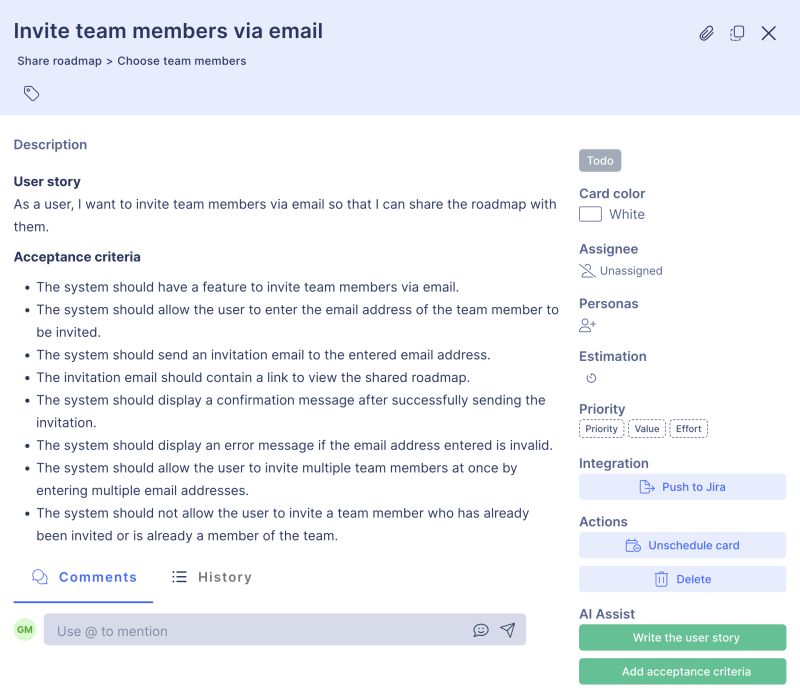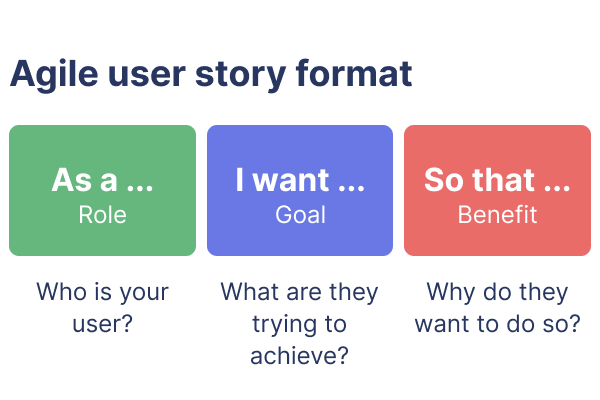Agile user stories and the Agile methodology have emerged as preferred approaches for many software developer teams. At the heart of Agile lies the concept of user stories, a simple yet powerful tool for capturing the functionality a user needs. Unlike traditional methods that often rely on extensive documentation, user stories keep the focus on the end user’s requirements in a concise and comprehensible manner. This approach not only streamlines the development process but also ensures that the final product aligns closely with the user’s expectations and needs.
User stories in Agile development are the cornerstone for planning, discussion, and execution. They bridge the gap between technical requirements and the value provided to the end user, ensuring that every feature developed serves a real purpose. Writing compelling user stories, however, is an art in itself. It requires a deep understanding of the user’s perspective, the ability to articulate their needs clearly, and the foresight to see how each story fits into the larger picture of the project. This blog post delves into the nuances of writing impactful user stories in Agile development, guiding you through each step of the process.
How do we write user stories?
STEP 1 — As a…
The first step in writing a user story involves identifying and articulating the user’s role. This step sets the stage by focusing on who will benefit from the functionality. It’s crucial to be specific about the user’s identity, whether a regular customer, an internal employee, or any other stakeholder. This perspective helps in tailoring the story to fit the unique needs and challenges of that particular user.
STEP 2 — I want…
The second step dives into the heart of the story—the user’s need or desire. This part outlines what the user wants to do or achieve with the functionality being developed. Focusing on what the user wants, not how it should be implemented, allows for more creative and effective solutions to emerge during the development process.
STEP 3 — So that…
The final step clarifies the purpose or the value of the user story. It answers why the user’s need is important and what outcome they expect from it. This part ensures that every feature developed has a clear value proposition, aligning the development work with the overall objectives of the project.
“Why Can’t We Just Write Features or Tasks Instead?”
Focusing solely on features or tasks can lead to a product that fails to meet user satisfaction standards. User stories shift the focus from just building ‘things’ to creating value for the user. They ensure that every feature developed is directly linked to a user’s need, making the final product more user-centric and effective.
Parts of the agile user story
User Story
The user story itself is a concise, simple description of a feature from the user’s perspective. It’s written in everyday language, avoiding technical jargon, to ensure clear understanding across all team members, including non-technical stakeholders.
Acceptance Criteria
Acceptance criteria are the specific conditions a user story must meet to be considered complete. They provide a clear checklist for gauging when a feature is complete and ensuring that it meets the user’s needs and expectations.
Write acceptance criteria with StoriesOnBoard AI
StoriesOnBoard AI streamlines the process of crafting detailed acceptance criteria for each user story, significantly saving time and effort. This innovative tool ensures that no critical details are overlooked, safeguarding the quality and relevance of your project outcomes.
Agile user story with acceptance criteria — written by Storiesonboard AI

Acceptance Criteria Goals
Acceptance criteria have multifaceted goals. They clarify what is expected of the feature, guide developers during implementation, and provide a basis for testing the functionality. Well-defined acceptance criteria are crucial for maintaining quality and ensuring that the developed feature aligns with the user’s vision.
How to use the INVEST method for writing agile user stories
Let’s dive deep into the INVEST criteria for crafting effective Agile user stories, featuring an illustrative image inspired by a photo from Smartworks Coworking on Unsplash. The INVEST acronym provides guidelines for formulating Agile user stories that consistently lead to the early and frequent delivery of valuable software. It offers a framework for defining requirements that align with Agile’s core principles and values.
The mnemonic INVEST is a handy reference for the essentials of impactful Agile user stories. Here, we provide a concise overview of each criterion and its significance, complete with examples of user stories that either align with or fall short of these standards. Additionally, we discuss how these criteria integrate with the concept of readiness and delve into the history behind their development.
For those working outside the software realm, simply substitute “working software” with “working solutions” when applying these principles.
According to the INVEST criteria, effective user stories are characterized by the following:
- Independent
- Negotiable
- Valuable
- Estimable
- Small
- Testable
Let’s unpack these attributes and understand their importance:
Independent
A story stands alone, free from dependencies on the completion of other stories.
Dependencies introduce delays. Only when all dependent stories are resolved can user-ready software emerge.
Negotiable
A story initiates discussion rather than dictating a specific solution.
Viewing the story as an ongoing dialogue between the product owner and the development team fosters mutual understanding and leverages collective expertise. This approach ensures that the product owner can highlight user benefits while the development team can identify the most efficient solutions. Openness to story evolution allows for adaptive delivery based on new insights.
Valuable
A story explicitly details the benefits it offers to users.
Agile aims to deliver software that holds real value. Thus, user stories must clearly articulate the advantages they provide—be it in meeting user needs, mitigating risks, saving costs, or enabling new learnings. Stories should contribute directly to the envisioned product outcomes.
Estimable
A story provides sufficient detail for the development team to estimate its size.
Understanding story size is crucial for planning iterations that yield functional software. It also helps product owners prioritize stories based on the value-to-effort ratio.
Small
A story represents the minimum viable piece of work that still delivers meaningful software.
Agile thrives on brief iterations, facilitating rapid feedback from users. To ensure value delivery within each iteration, stories must be compact and manageable.
Testable
A story’s clarity allows for the evaluation of its completion status.
Stories must be defined so that it’s possible to ascertain whether they meet all acceptance criteria. This enables developers to create automated tests and product owners to verify story fulfillment during acceptance checks.
Related posts
Agile User Stories: FAQ for Product Teams
What's a good user story format?
Use "As a [role], I want [capability], so that [benefit]." Write it in plain language and focus on the user outcome, not the implementation. That structure nails who, what, and why.
Why not just write features or tasks?
Features and tasks often miss the real need. User stories tie work to customer value, which improves prioritization and satisfaction. They keep teams focused on outcomes, not output.
Who should write user stories?
The product owner owns the backlog, but the best stories are co-written with BAs, PMs, designers, and developers. Pull in stakeholders and real users to sharpen clarity and value.
What are acceptance criteria for?
They define "done," guide development, and enable testing. Clear criteria cut rework and help the product owner confirm the story meets the need at acceptance.
How many acceptance criteria should a story have?
Only as many as you need to make the story unambiguous and testable. Use concise, observable statements—often Given-When-Then. Skip UI or technical details unless they’re essential.
How do I ensure stories meet INVEST?
Verify each story is Independent, Negotiable, Valuable, Estimable, Small, and Testable. If it’s not estimable or small, add detail or split it. Make the user value explicit.
How do I split a large story?
Slice by workflow step, business rule, data type, platform, or happy path vs. edge cases. Each slice should deliver user-visible value and keep dependencies low.
What makes a story testable?
Observable outcomes plus clear acceptance criteria. Cover positive paths and critical edge cases so automated tests and acceptance checks are straightforward.
Can non-software teams use user stories?
Yes—treat “working software” as “working solution.” INVEST still applies and keeps service or operations work centered on customer outcomes.
How can AI help with acceptance criteria?
Tools like StoriesOnBoard AI can quickly draft solid criteria and edge cases. Treat the output as a first pass, then refine it with the team and align it to your Definition of Done.
Continuous Discovery: Turn User Stories into Testable Hypotheses
INVEST makes stories buildable, but top teams pair stories with continuous discovery. Rather than jumping from request to solution, they treat each story as a small bet tied to a real user opportunity and an outcome, then learn quickly from evidence.
Add a lightweight discovery capsule to each story:
- Opportunity: the user problem or job to be done this story addresses (link to your journey or opportunity–solution tree).
- Hypothesis: We believe [capability] will [impact] for [segment].
- Evidence: insights or data that show this is worth trying.
- Experiment & instrumentation: how we’ll validate (A/B, beta, usability test) and what we’ll track.
- Success metric: a leading indicator aligned with an OKR or North Star.
This approach sharpens prioritization and reduces delivery risk: ship small, testable stories behind feature flags, confirm value with analytics, and tie acceptance criteria to the success metric. Use interviews, in-product feedback, and usage analytics (optionally summarized with AI) to refine the hypothesis and feed the next iteration.
If you keep story maps or opportunity–solution trees, link each story back to its parent opportunity. You’ll see which bets pay off, double down on what works, and cut the rest.
